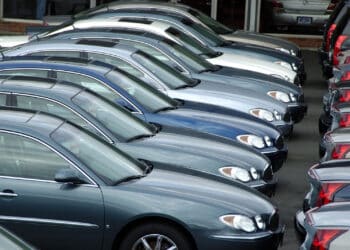Mobility Impact on Auto Finance to Be More Muted, WardsAuto Exec Says

ORLANDO — There are numerous discussions across the industry about the impact that car subscriptions will have on traditional vehicle financing, but the changes between now and 2025 will not be as dramatic as the industry predicts, according to Haig Stoddard, a senior industry analyst at WardsAuto.
“I don’t think subscription vehicles, even by 2025 timeframe, are going to have a significant effect on the turnover [of ownership],” he told attendees at CBA Live yesterday. “But I think it’s going to catch on looking into the long-term future if things [continue] to go the way they look like they are going … but we are talking 20 years from now.”
The reason there likely won’t be noticeable differences in financing for the next several years is that the change will be slower than many expect, he said. Even though there is a deluge of off-lease vehicles expected to come back to the market this year, many consumers may still want a new vehicle, Stoddard said, referencing that consumers are still attracted to car ownership. However, “mainstream brands might want to continue strong programs as a way to create loyalty among first-time and younger buyers,” he added.
Meanwhile, car subscriptions aren’t the only alternative to new-car ownership. As new-vehicle prices rise — causing lenders to extend terms — Edmunds predicts consumers will be pushed to the used market amid attractive off-lease deals, Jessica Caldwell, executive director of data strategy at Edmunds, told Auto Finance News last month.
The 4 million vehicles leased three years ago will be returning to market this year, and even more are expected to return in 2019.
“[When there is an] oversupply and market prices are noticeably lower than what you are [already paying], people may make that switch to the cheaper [off-lease] vehicle,” Caldwell said. “We haven’t seen that a lot yet, but … it’s the beginning of that trend.”
That being said, fleet management will have a pronounced impact on auto finance amid the rise in car subscription services.
“I think fleet management is where the change happens,” he told Auto Finance News. “How does the financing work when you are both getting more vehicles to people but its a fleet vehicle?”















